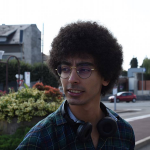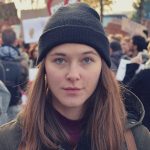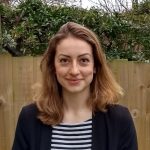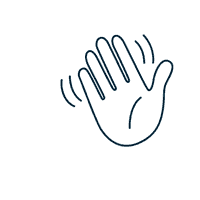Creuse: French youth making it happen in the back of beyond
According to the United Nations, over two thirds of humanity is predicted to live in cities by 2050. This demographic trend is already being felt in France as the energy drains out of the country’s 15,000 villages. Suffering the greatest population decrease of all French départements is Creuse – a region seemingly powerless to stop the flight of its young people who are leaving in search of new horizons. But the situation is not without hope. There are still some young locals contributing to the region’s development and striving, against all odds, to repopulate their home.
In Pontarion, a village in the north of Creuse, Delphine Pluvinage lives with her mother and four-year-old son in a rather unique artist’s workshop. It’s an old boulangerie filled with embroidery, hand-sewn items, jewellery and other quirky objects. Delphine embroiders, while Anne, her mother, makes jewellery, sews and works with wood. Thrilled by found objects, they transform them and give them a second life. “Before moving here, my mum was a framemaker for the Maison Lesage, an haute couture embroidery workshop in Paris.” That’s how Delphine first came into contact with the world of embroidery. Since then, the former Parisian has lived her life at a blink-and-you’ll-miss-it kind of pace. “I’ve always done things spontaneously. I’m 22 and I already have a house, a child and a job I love.”
Her path was far from laid out in advance. “Me and mum needed more space to store our things as well as accommodation because our building in Paris had been sold off by the council,” she explains. At this point the women decided to withdraw their savings and move away. “We found this place for 10,000 euros on Le Boncoin. It’s closer to a hangar than a house but we live here and it’s fantastic,” says Delphine. As the population in the region is tending to decrease, Delphine’s case is a perfect counterexample. But despite her optimism, her decision to move two years earlier wasn’t by choice. “It was very random. We ended up in Creuse for financial reasons more than anything. But we fell in love with it and we’ve never regretted the decision.” She now considers herself a fully fledged Creusoise, although as an ex-Parisian she is aware of her new region’s image. “For me, the clichés about Creuse were all cows and fields. It’s really seen as a godforsaken backwater of France.” But her opinion changed over time. “I resent myself for thinking that. Now I’d say that it’s one of France’s loveliest regions.” Another reason for settling here was so she could bring up her son away from Paris’s concrete jungle. “He really likes nature. He’s very creative for his age and I think he has more opportunity to flourish here, in a class of 10 students, than he does disappearing in a class of 30.”

Delphine and one of her cats © Lara Bullens 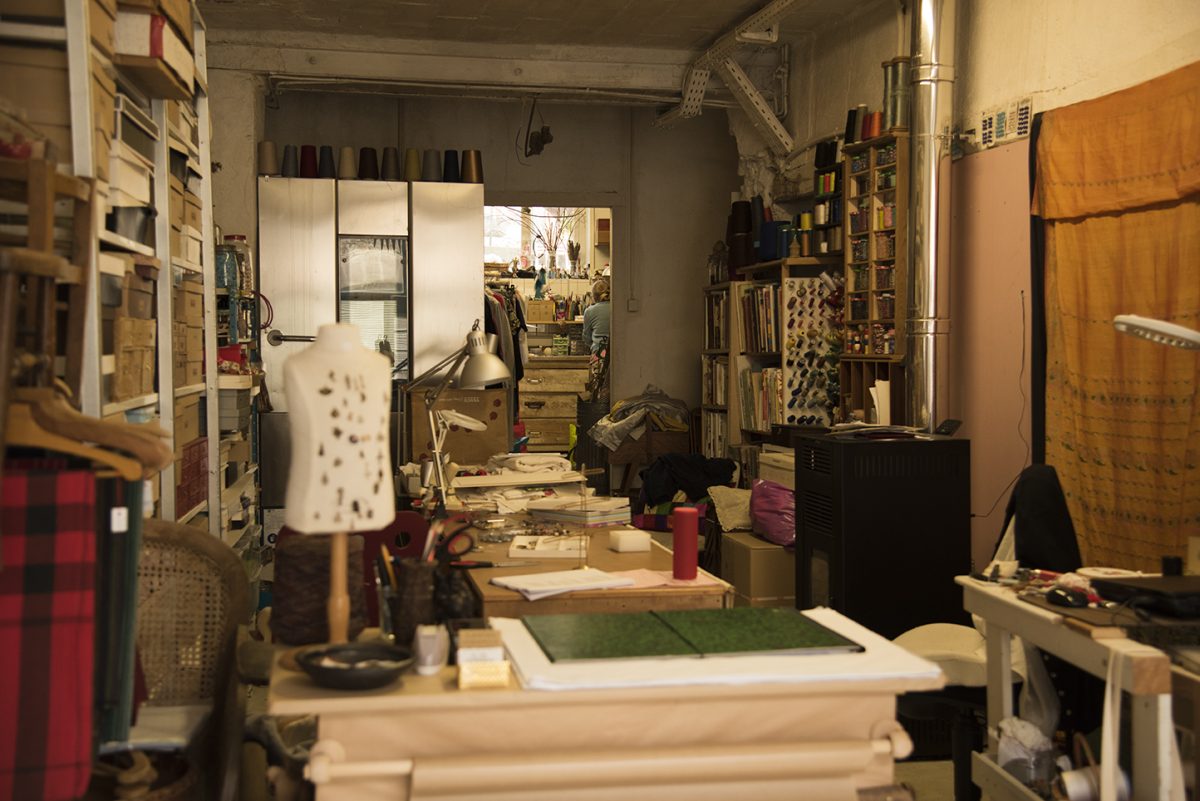
The workshop © Lara Bullens
Delphine proudly displays the Made in France label on her work. She estimates that she now has enough visibility to make a living from her creations. “It’s thanks to social media that I was able to make my first online sales,” she explains, referring to her 80,000 Instagram followers. She was contacted by an organisation that takes part in the annual MIF fair, a show in Paris for Made in France products, which offered her the chance to have her own stand and showcase her latest creations. “It was a great experience. I sold a lot and I’m going back this year,” she says enthusiastically. She considers her work a success, but it wasn’t without sacrifice. “Mum and I spent the first year of our move renovating the house. We still haven’t really made friends here. Last year, I was still feeling a bit lonely. But I’m solitary by nature. I can get by on my own.”
A forgotten France
With 120,365 inhabitants – the latest figures date from 2015 – Creuse’s rate of demographic change is one of France’s most intense. It’s rate of population decrease is negative even when you compensate for new arrivals. Nevertheless, more people are coming to live in Creuse than are leaving. “Net migration is positive. It’s therefore an attractive region,” explains Vanessa Girard, an urbanist specialising in demographics. “On the other hand, it has an aging population, which does not encourage investment and thus causes population decrease.” 67% of households in Creuse consist of residents above retirement age. Michel Vergnier, the Socialist mayor of Guéret (Creuse’s capital), confirms that the region feels more and more cut off by the state. “Economic development is not directed towards Creuse. The liberalisation of trade in Europe has caused important employers in the region to close. When the business leaves, young people leave.”
“A region is only brought to life through the people that live there.”
Despite political efforts, the challenging demographic situation has been keenly felt over the last few years, and the region’s population has not stopped decreasing. Creuse’s economy has been in decline for decades. In 2015, the lowest GDP per capita was recorded here of any region in France, less than 20,000 euros per household. An increasing sense of isolation and self-reliance can be felt in most sectors of Creuse’s economy. This is evident in the story of the GM&S factory (which manufactures car parts) where production has once again stalled this year. Despite the best efforts of its young citizens, Creuse is gradually taking its place in the diagonale du vide (or “empty diagonal”, the name for a band of low population areas stretching from the northeast to the southwest of France). So this decreasing population trend is set to continue, forecasting nothing good for the countryside in coming years.
So is there such a thing as a forgotten France? “Yes and no,” responds urbanist Vanessa Girard. She argues that even though “at first glance, cities are more and more heavily populated”, the French demographic model has been more nuanced since the 1970s than the United Nations’ estimations. “First and foremost, the reason people settle in less urban areas instead of big cities is in response to accommodation needs,” she explains. “It’s not social class or a question of rich versus poor, but rather the makeup of families that most defines geographic distribution.” This was true for Delphine, who wished to bring her child up away from the city. “It’s normally at the point when a couple has children that they decide to move away from the centre of town,” explains Girard.
This opinion is not shared, however, by Christophe Guilluy, author of La France Périphérique (Peripheral France). In the book, he explores the physical distribution of the working classes and their geographical and social significance. According to him, if a peripheral France does exist, it’s above all social in nature. “It can’t be determined solely by geography,” he writes. “It’s first and foremost about the social distribution of different working class groups in low-income categories: labourers, employees, farm workers, the young – both employed and unemployed – and the retired.” He believes this is “just as urban as rural, no matter the region”.
Real solutions are still hard to find. Isolated in the centre of the country, Creuse is reliant on France’s agricultural and industrial policies. Many feel, like Guéret’s mayor, abandoned by decades of choices made by successive governments. Whether in urban or rural areas, Creuse hasn’t managed to benefit from its land use. Guilluy argues that this is a major difficulty, but not an insurmountable one. “In a way, a region is only brought to life through the people that live there. In this sense, Creuse is representative of a forgotten France.”
Catch me if you can
Other young people settling in Creuse don’t always fit Delphine’s profile. Among them is Mathieu Couturier, a 34-year-old agricultural worker who has taken over his father’s farm. Mathieu lights a cigarette in his campervan in Lussat, a tiny village in the east of Creuse, before reeling off the story of the last decade of his life. He moved to the farm, situated in nearby Nouzière, in 2005, and took the opportunity upon his father’s retirement to convert from farming cows to hens. Well up to date on organic farming practices, he now has 5,000 birds that he sells on directly – no middle man. At first glance, he seems to be doing pretty well; his 78 hectares extend out of sight and offer great views of the Landes lake. But even though the current government has promised 1.1 billion euros over five years to subsidise organic farming, Mathieu doesn’t hide his distrust of their intervening in farming policy.
“There’s a lot of myths surrounding organic farming. The ex-minister Stéphane le Foll wanted to promote its development by making it easier to convert farms.” Except that, following the launch of the initiative, farmers faced payment delays due to the fact that ministers didn’t expect such a high number of conversions. “Many of us still haven’t seen the money from 2016 and 2017,” Mathieu reports, who has felt “duped” for three years now. Despite his weariness with successive national agricultural policies, the young farmer continues to follow political action in his region closely, in particular that of Michel Vergnier, the aforementioned mayor of Guéret, and Eric Corréia – a Creusois regional councillor. These two politicians have entered into a power play with Emmanuel Macron, as a result of the Plan Particulier pour la Creuse (PPC; Specific Plan for Creuse) negotiated by the mayor and signed off on by the head of state. The measures are intended to improve daily life for Creusois citizens by repopulating the region.
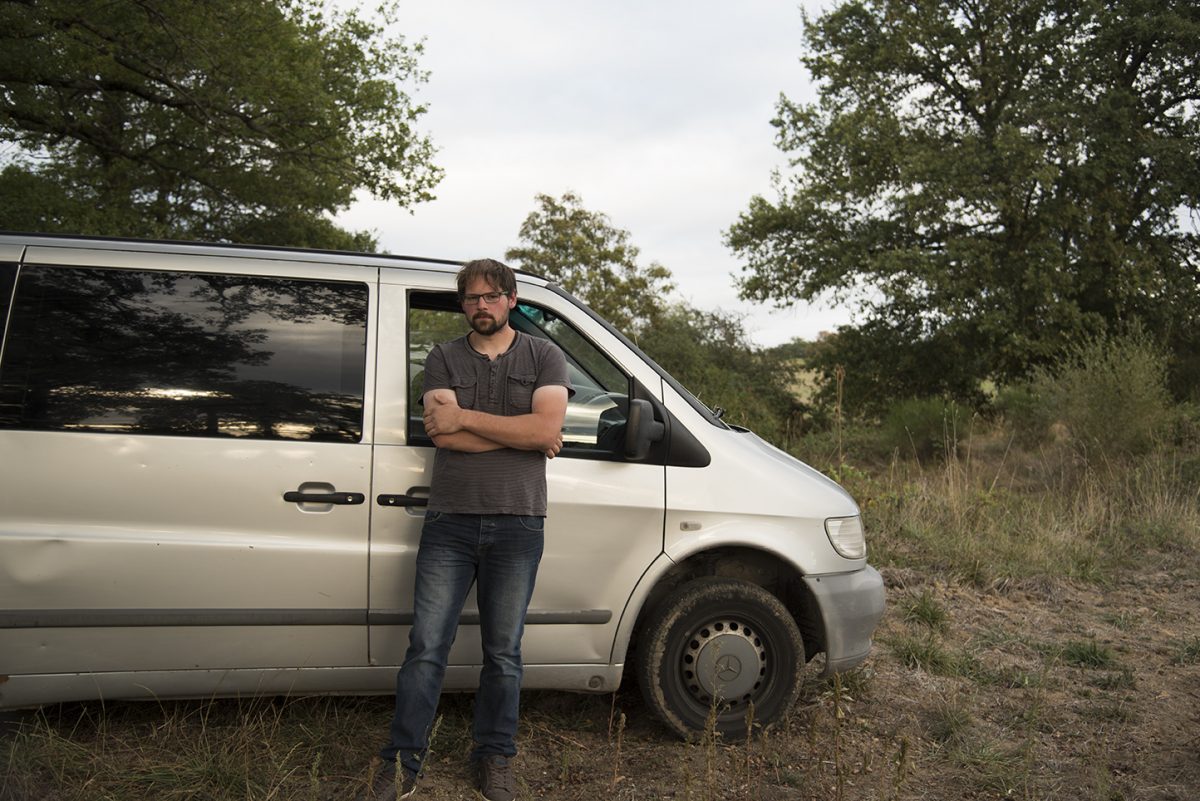
Mathieu © Lara Bullens 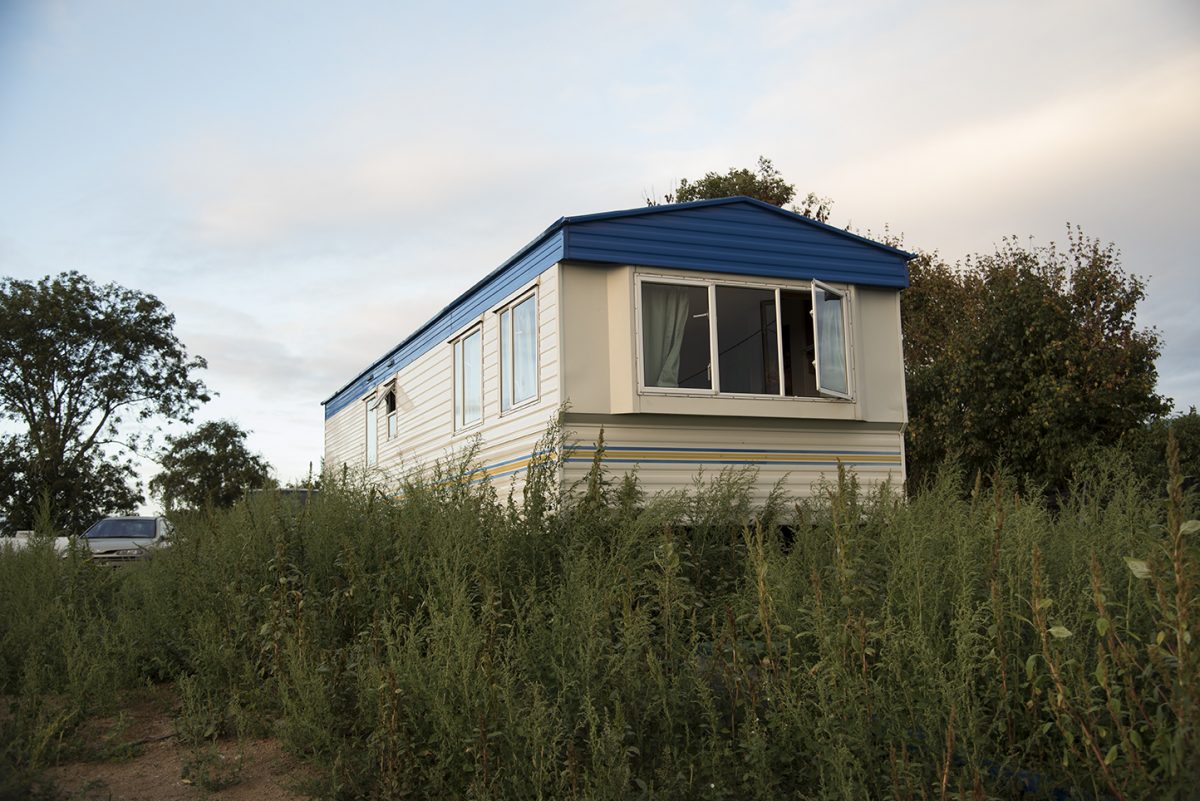
His home © Lara Bullens 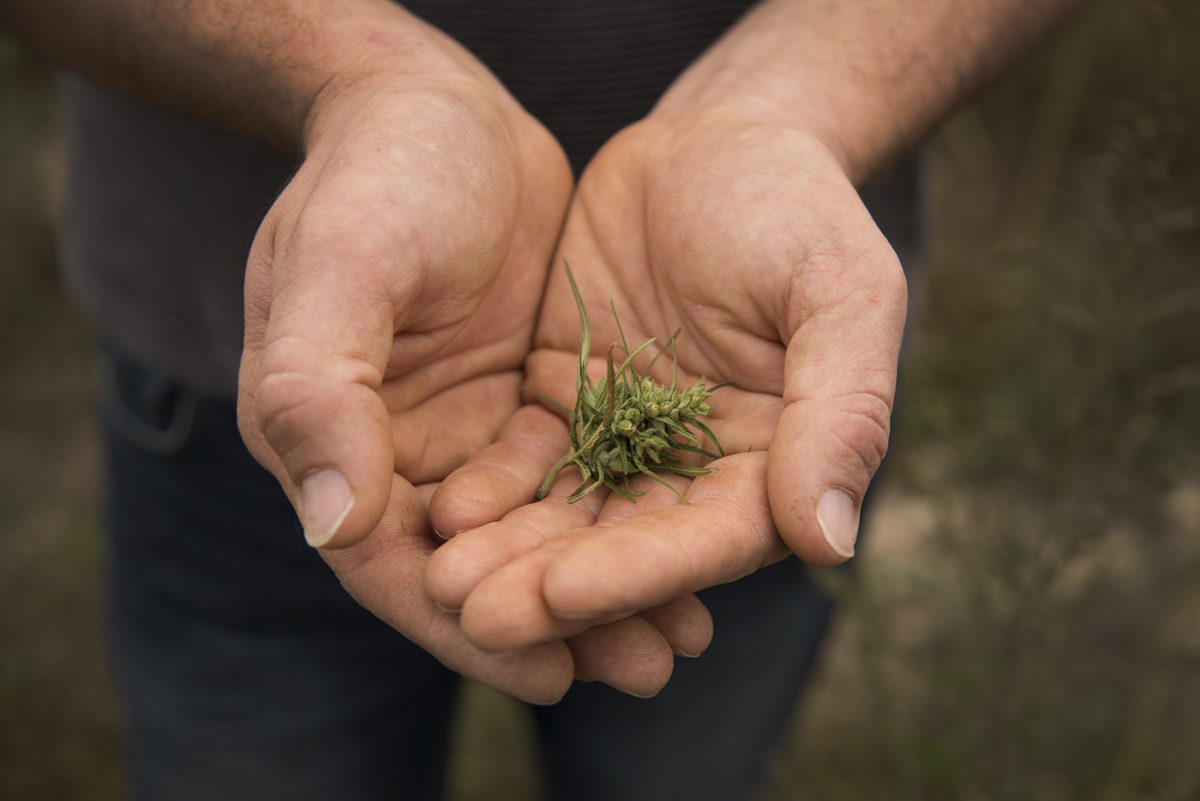
His plant © Lara Bullens
A few kilometres away, Michel Vergnier, elected mayor of Guéret by a comfortable margin, explains how he convinced the President of the Republic to follow through with the plan to revitalise the region. A specific programme – the only such plan in France – the PPC brings together 17 working groups with the aim of developing a “countryside for the future”. Their focus varies: sustainable farming, culture and leisure – even new health technologies. Keen on sport, Vergnier wants to make Guéret an “Olympic training centre for mountain biking”. An activity that he believes has the power to boost the town’s image. “International teams would come to train here; just imagine how Creuse’s image would be turned on its head instantly!” The plan, now the number one issue for the region’s inhabitants, represents a battle that is far from over.
“The PPC came out of an incident in Egletons, in Corrèze, when some local representatives and I were tear-gassed by riot police who were protecting the president, who had refused to see us.” That was 4 October 2017. After 150 employees at the GM&S plant lost their jobs, a number of determined mayors decided to take the matter directly to Emmanuel Macron. The plan quickly fell apart. “What we wanted was for elected officials to be met with so they could raise the issues caused by job losses at the car parts manufacturer,” points out Vergnier – who was spokesman of the Association of French Mayors at the time. A big media campaign ensued, at first local, but soon national. “When elected representatives don’t like what the state’s doing, they block it,” says the mayor. Pressure was rising day by day and the President of the Republic eventually invited the mayors to the Élysée Palace. “We asked for 30 minutes. We got 45,” says Vergnier happily.
“Each of us gave our own account of economy deprivation in Creuse. In addition to the GM&S situation, lost jobs and the suppression of access to work programmes had affected 400 positions.” This was a heavy blow to a region suffering from progressive depopulation. The head of state responded by asking representatives to present proposals, including “extralegal” options, to revive the economy and attract people back to the region. If this seems an odd utterance from the mouth of a president, in Creuse’s case it in fact makes perfect sense. If Macron happened to use this wording, it’s because there’s one currently illegal solution that could indeed hold the answer.
On 2 February last year, at a press conference at the town hall in Guéret dedicated to the PPC development plan, councillor Corréia let slip to a journalist the possibility of special dispensation to trial cannabis farming in the region. He believed the project could satisfy the interests of both farmers and the government, since beyond being a public health question, medicinal cannabis would provide a promising new economic sector. “In Colorado, it’s created 18,000 jobs in three years! In France, one hectare of wheat brings in 300 euros. One hectare of cannabis: 2,500 euros.” This solution would therefore boost economic activity in Creuse, according to Corréia.
The proposal garnered a lot of attention and, to the councillor’s great surprise, was well received in Guéret. The icing on the cake was that an IFOP poll around this time revealed a striking shift in public opinion; 8 out of 10 French people were in favour of the use of cannabis for medicinal purposes. If Corréia appears to have the power to bring this project to fruition, it’s above all because of his three current jobs: president of the municipal association of Grand Guéret, regional councillor and anesthesiology nurse. “It’s first and foremost a humane project, destined to bring relief to people who are suffering,” he explains as he adjusts his glasses. It was hearing the positive testimonies of patients who had turned to medicinal cannabis over opiates such as morphine and codeine that gave him his lightbulb moment. “I don’t understand why it’s still allowed, in France and elsewhere, to have medicine derived from opium. It’s an extremely dangerous drug that causes 150 deaths a day in the United States. Cannabis has never killed anyone.”
The weed rush
According to statistics produced in 2016 by the Department of Agriculture, there are 437,000 farms in France. 30 years ago there were more than a million. This isn’t really surprising: according to Agreste, the department’s statistics wing, agricultural production today accounts for just 3.5% of French GDP. Though the general trend is a downwards one, around 5% of Creuse’s population are farmers, compared to 1% nationally.
Fed up by his difficulties making ends meet, Mathieu Couturier made the decision to diversify beyond livestock. His idea follows Corréia’s line of thinking; he has dedicated 50 hectares of land to growing industrial hemp. The plant resembles recreational marijuana, but does not have its cousin’s psychoactive effects and its cultivation is legal. “France is the biggest European producer,” Couturier explains. “It can be turned into anything: oil, animal feed, rope, textiles, insulation…” But there’s another reason why Couturier is giving it all he’s got. “We know that the crop has further potential,” he continues, who sees himself becoming one of the first legal producers of medicinal cannabis in France.

“We’re aiming to entice a new demographic,” explains Corréia. “Macron is hoping to repopulate Creuse by leading with economic development, but it’s job creation that’s going to attract people.” He’s made medicinal cannabis his mission because it sits at the intersection of his day job and his political duties. “Sanofi has bought out a company producing medicinal cannabis. Pernod-Ricard is also interested in the topic and Corona is going to invest 4 billion euros in it. Why are these companies so interested? We can’t ignore what’s right under our noses.” Especially not when it “could pay really big dividends”. The mayor singles out farmers as people who would get a bigger piece of the pie. As for Couturier, he says, “There’s high demand and a market price that makes it worthwhile. It’s exactly what we’re looking for in farming at the moment.” According to Corréia’s calculations, getting authorisation to cultivate medicinal cannabis in Creuse would create 400 to 500 jobs “if we had a 100% share of the industry, meaning everything from production to sale”. The issue is one to watch, though even if Macron is seriously considering the project, the sale of cannabis is still illegal in France, even with very low THC (the active ingredient in weed) levels.
Unlike certain sceptics, Couturier believes the rush towards weed to be more than just a PR exercise. “I supported Corréia because he’s got a smart project,” explains the farmer as we head towards his field of industrial hemp. Practically impassable by car, the path is littered with obstacles and the fields are shrouded in mist. It’s enough to discourage even the most curious visitor. “We’re in the middle of harvesting right now,” he informs us. Ahead of us, an immense field of hemp stands tall. “That’s the way we’re more likely to go,” he says, pointing to a section of greener crop. He insists that France has savoir faire when it comes to growing hemp, especially in Creuse. “To make it the pilot region for medicinal marijuana, legislation has to change and we need to develop a whole range of varieties containing less than 1% THC.”
According to Corréia, Health Minister Agnès Buzyn was opposed to the idea at first. But she seems to have changed her mind, as evident in her statements to France Inter on 24 May last year: “There’s no reason to exclude a treatment that has potential for easing certain types of pain under the pretext that it’s cannabis.” In wake of her comments, Corréia got in contact with the health minister’s office as well as with that of Édouard Philippe, the French Prime Minister, who also seems in favour of the idea. “That only leaves the president,” Corréia jokes, convinced that his project will come to fruition.
“Finding common humanity”
A stream passes through an ancient water mill having flowed under the Métive – a 600 square metre artist residence. A ray of sunlight filters through the windows of the building, revealing an immense expanse of gleaming parquet floor. As manager, Aurore Claverie, aged 33, has tasked herself with repopulating the region using art. She doesn’t believe in a simple dichotomy of city and countryside. She thinks that it’s a lack of meeting spaces that has caused her region to become cut off from the rest of France. “To create is to make something happen through an encounter with a different point of view,” she explains. It was living in Tangiers for seven years that made her conceptualise such encounters as a method for “changing the world”. With a wealth of life experience, and disillusioned by the inequalities in access to culture faced by the Moroccan population, this video artist decided to move back to France. “I came face to face with people who didn’t have the right to travel from one place to another, while others did. That’s what we call borders and it’s something that profoundly sickens me.”
Having gained a lot from these urban experiences, she moved to Creuse, seeing the possibility to create encounters between populations in rural and urban areas there. Like Delphine, property prices were what first attracted her to Moutier-d’Ahun, a village 20 kilometres outside Guéret. “The countryside was the only part of Creuse I knew, since my mother had bought a house in Vieilleville [in the northwest of the region]. Because property is quite cheap, I didn’t have to work like a dog for years in order to buy or rent here,” she explains. Originally from Gers, she is a graduate of prestigious Parisian universities l’École Pratique des Hauts Études and the Sorbonne. She has many creative and cultural aims she hopes will “protect the Métive’s DNA”. Among them, a wish to bridge cultures. “I would like to be able to create bridges between Tangiers and Creuse,” she specifies.
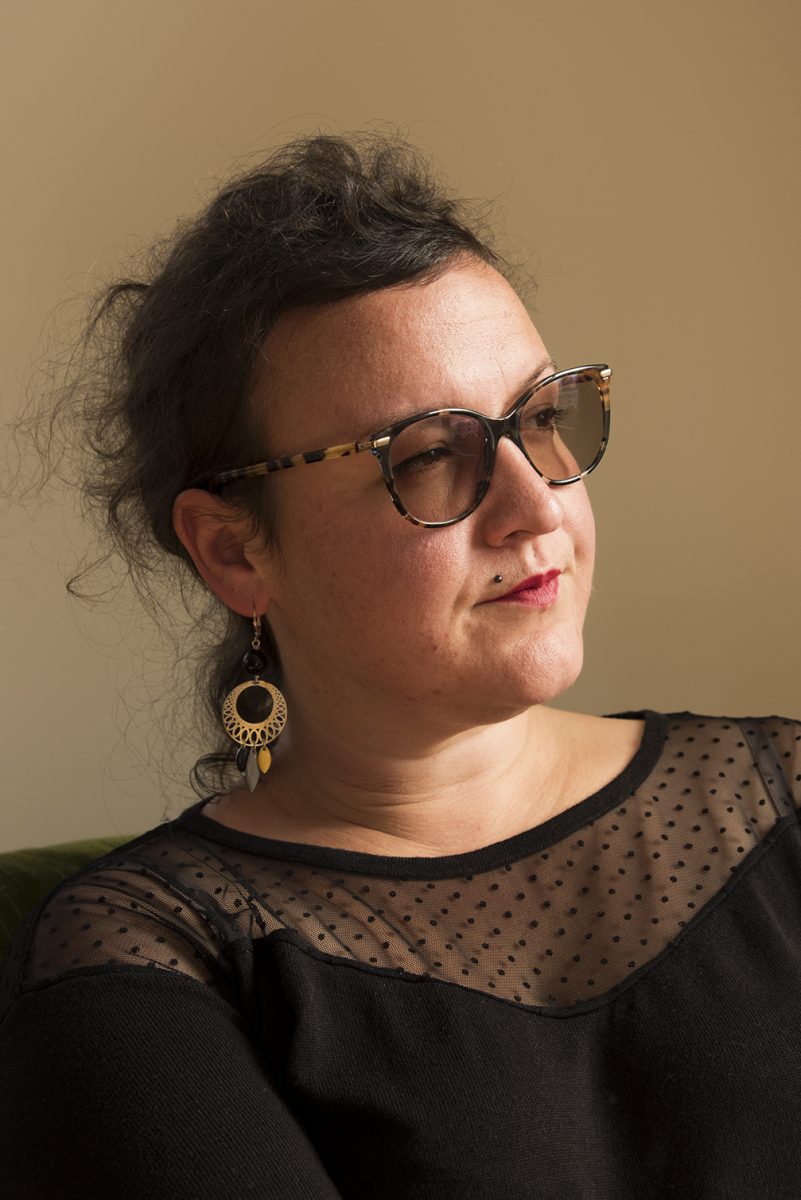
Aurore © Lara Bullens 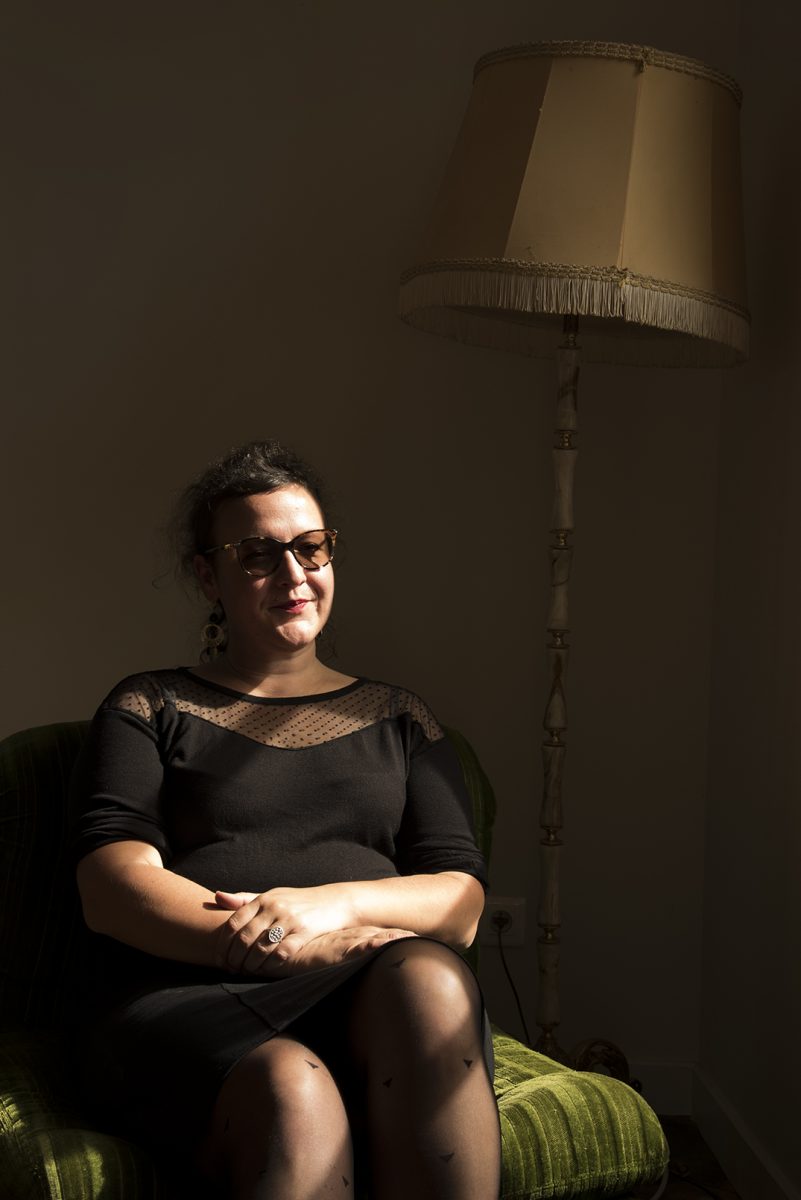
Bathing in the sun © Lara Bullens
But change isn’t possible without cooperation between sectors that have spent years left to their own devices. “Culture cannot develop in isolation. It must happen hand in hand with the economy and tourism. There’s no relevance if we just stick to our own little bubbles.” She does not, in spite of everything, feel abandoned by public institutions. “There has been a great response from our financial partners, the region, the local office of cultural affairs, village communities and the département. Doors have started to open.” It was only after discussions with the local authority that she realised people were surprised by how engaged she is. “Last summer, the Métive was booked up by people from all over France,” she exclaims. “We even had someone come from Togo!” Without a doubt, she thinks culture has the power to convince young people to stay and yet more to come. “A student who came for an internship in June from the art school in Cergy decided to move here permanently after a week. He was happy with the quality of life that he could have here. He rented a studio facing the abbey.”
Yet, as was the case for Delphine and many other young people in the region, nothing seems possible without at least some sacrifices. Working a full-time job on a salary that pays a fraction of what she expected, Aurore sometimes finds it hard to improvise with “bits of sting” and to throw her full weight behind the artistic project. “I’m talking about breaking down the barriers between artists and the rest of the world, because it’s also up to us to do it.” This is work she feels is necessary to build a “common humanity”.
Bringing art back down to Earth
As she has made it her mission to build bridges between strategic endeavours, Aurore is trying to develop projects with transregional partners across Nouvelle Aquitaine. “We’ve just launched a partnership with Fifib, Bordeaux‘s independent film festival.” But this also depends on economic development in her own département, which is no easy task. “I’ve been to the PPC meetings; people just aren’t able to work together,” she says, exasperated. “I don’t believe in working like that.”
In contrast to the mayor of Guéret’s enthusiasm, Aurore doesn’t really want to encourage young people into the process of economic regeneration. “I don’t believe in young people more than I do in people who are not so young. I don’t want to work solely with people who are forced to take part. I prefer working with those who aren’t able to access these structures. In France we use the term public empeché [or “prevented public”, people who for whatever reason are unable to physically travel to public services]. What does that even mean? That word is awful.”
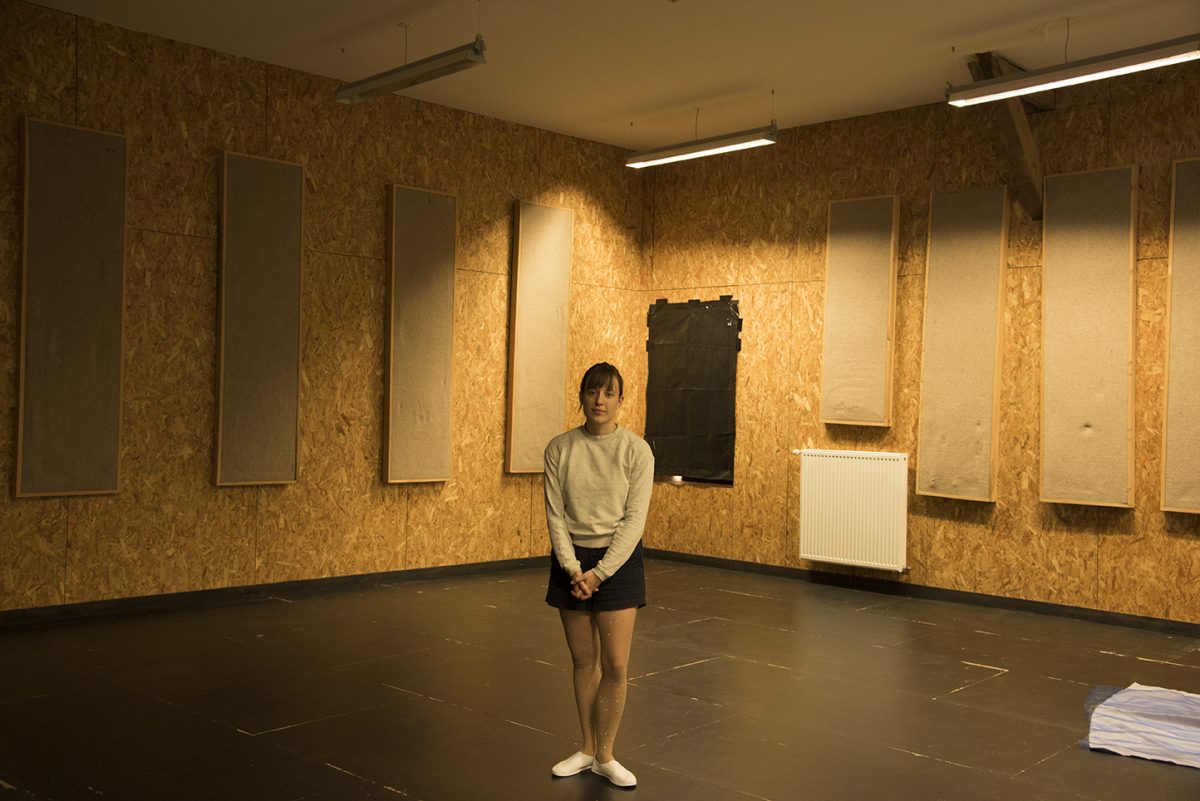
As director of the Métive, her mission is to create new connections while helping to patch up the relationship between people and art. The problem is the “barriers” that are put in place, and that art, in her opinion, is being put on too great of a pedestal. “I believe that those who think of art as elitist must have a complex,” she says. The responsibility for this is shared by people in the art world, since the feeling is a consequence of existing prejudices on both sides of the divide. “It wasn’t a safe bet opening up the Métive to non-artists. People looked at me like I was an alien because we weren’t supposed to desecrate the temple of creativity.” Aurore tried innovative methods to put an end to these clichés, notably getting a brood of hens for the garden. “It doesn’t seem like a big deal, but it’s totally strategic. We have a compost heap and people from the village bring their food waste to the Métive. The hens lay eggs, which I take to people in the village. Now that there are chickens in the garden, people stop on the bridge and take a look at the residence.” She is, however, keeping herself grounded. “I make no claim to be educating anyone at all. I also like art with a capital A, but I don’t want to canonise our relationship to it.” After having moved around 20 times, Aurore sees her future in Creuse, an eldorado that finally gave her a reason to settle down.
